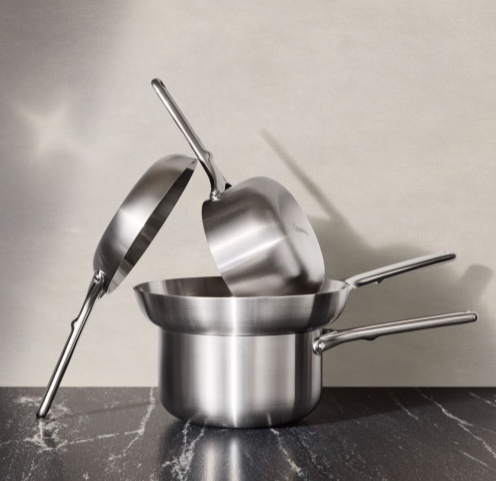Why Stainless Steel Is Hygienic?
In today’s world, where cleanliness and sanitation are paramount, choosing the right materials for surfaces in kitchens, hospitals, food processing, and even our homes is critical. Among the myriad options, stainless steel consistently stands out as the undisputed champion of hygiene. Its unique combination of physical and chemical properties makes it an ideal choice for environments demanding uncompromising cleanliness. Let’s delve into the science behind stainless steel’s hygienic superiority.
1. The Impervious Shield: A Non-Porous Surface
The foundation of stainless steel’s hygiene lies in its dense, non-porous surface. Unlike materials such as wood, plastic, or even some ceramics which have microscopic pores or cracks, stainless steel presents a smooth, uninterrupted barrier. This is crucial because bacteria, viruses, mold, and other contaminants cannot penetrate into the material itself. They remain on the surface, making them far easier to completely remove with standard cleaning and disinfection protocols. There are no hidden sanctuaries for germs to hide and multiply.
2. The Self-Healing Guardian: The Chromium Oxide Layer
Stainless steel isn’t just passive; it actively protects itself and its surroundings. Its defining ingredient, chromium (minimum 10.5%), reacts with oxygen in the air to form an incredibly thin, invisible, yet incredibly tough layer of chromium oxide (Cr₂O₃) on its surface. This layer acts as a self-repairing shield. Even if minor scratches occur (avoid deep ones!), exposure to oxygen allows this protective layer to reform. This barrier effectively resists corrosion, rust, and chemical reactions, preventing the leaching of metals into food or the environment and stopping corrosive agents from creating rough patches where bacteria could cling.
3. Built for Tough Cleaning & Resistance
Hygienic environments require frequent aggressive cleaning. Stainless steel excels here too. High-quality grades like the industry-standard 304 (18/8) and the even more corrosion-resistant 316 (containing molybdenum) possess exceptional resistance to a wide range of cleaning chemicals, disinfectants, heat, and moisture. They won’t degrade, warp, or absorb chemicals like some plastics, ensuring the surface itself doesn’t become a source of contamination over time.
4. Food Safety Compliance & Ease of Maintenance
Stainless steel is the material of choice globally for food contact surfaces. Grades like 304 and 316 meet stringent international food safety standards . Its non-reactive nature means it doesn’t impart flavors or undesirable substances to food. Furthermore, its smooth surface allows for quick and easy cleaning – spills and residues wipe away effortlessly, minimizing the risk of bacterial growth. Simple routine cleaning maintains its hygienic integrity.
Conclusion: The Unbeatable Choice for Cleanliness
Stainless steel’s hygiene dominance is no accident. Its non-porous nature forms an impenetrable barrier against microbial ingress. Its self-regenerating chromium oxide layer provides continuous protection against corrosion and contamination. Its exceptional resistance to cleaning agents and environmental factors ensures long-term performance, and its compliance with food safety standards makes it the trusted choice globally. When you choose high-quality stainless steel , you’re not just selecting a durable material; you’re investing in a scientifically proven, inherently hygienic solution that actively contributes to a cleaner, safer environment. Trust stainless steel – the foundation of true cleanliness.
Contact us:
Email: export@aoxingmetal.com
Website: www.aoxingmetal.com
WhatsApp: +86 18316490047
